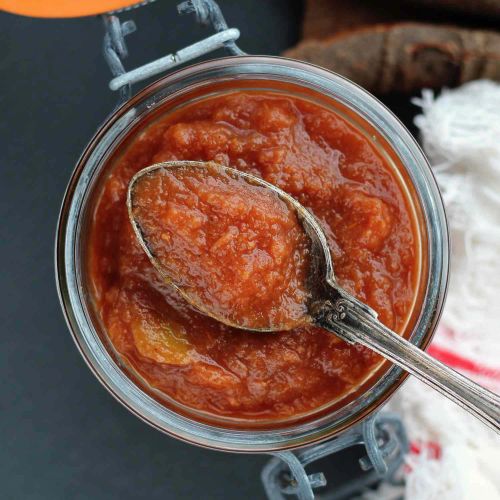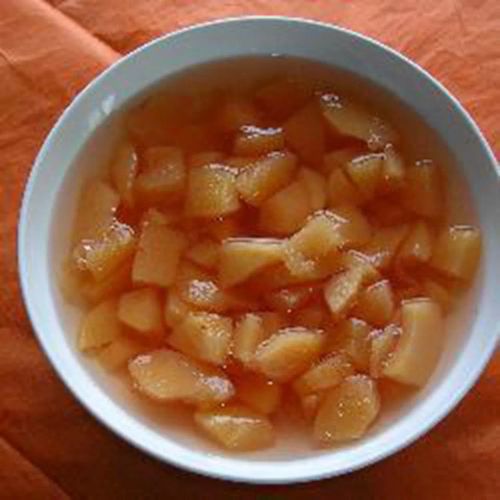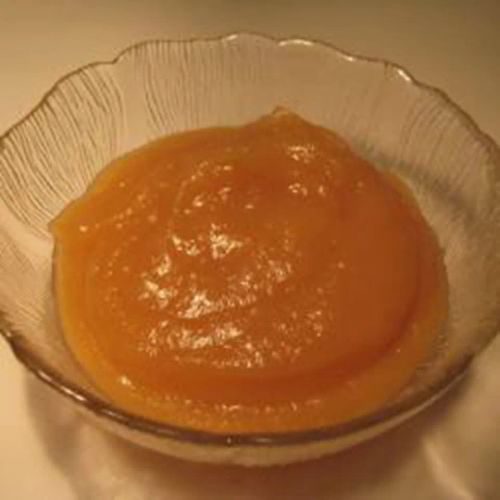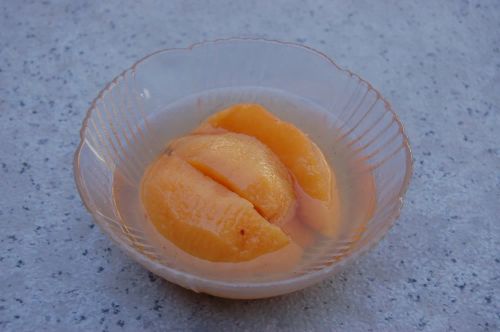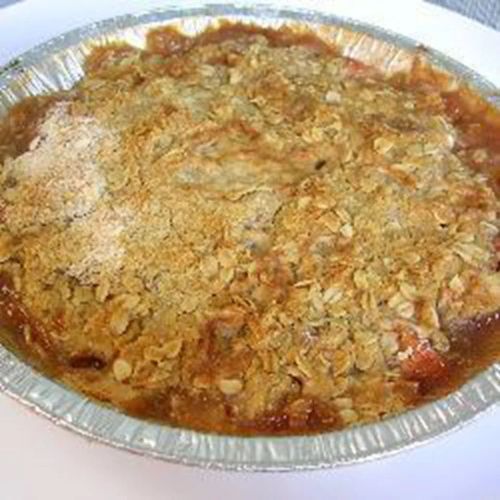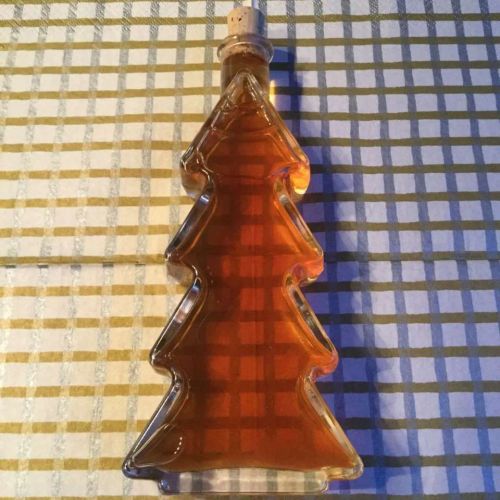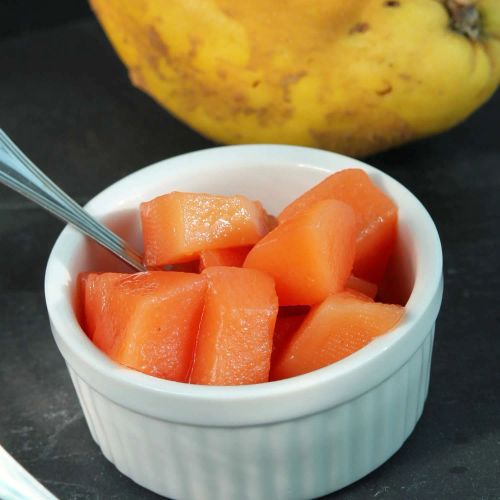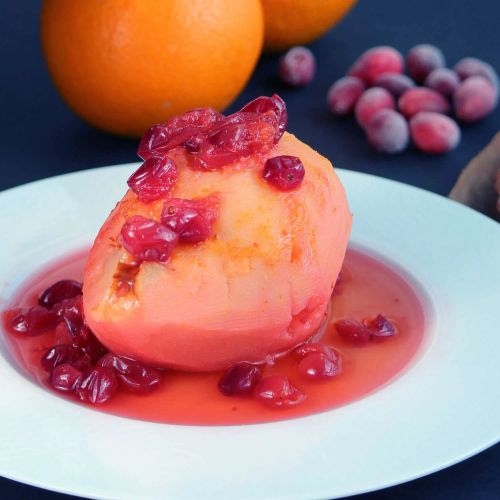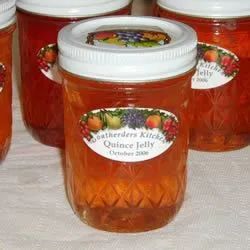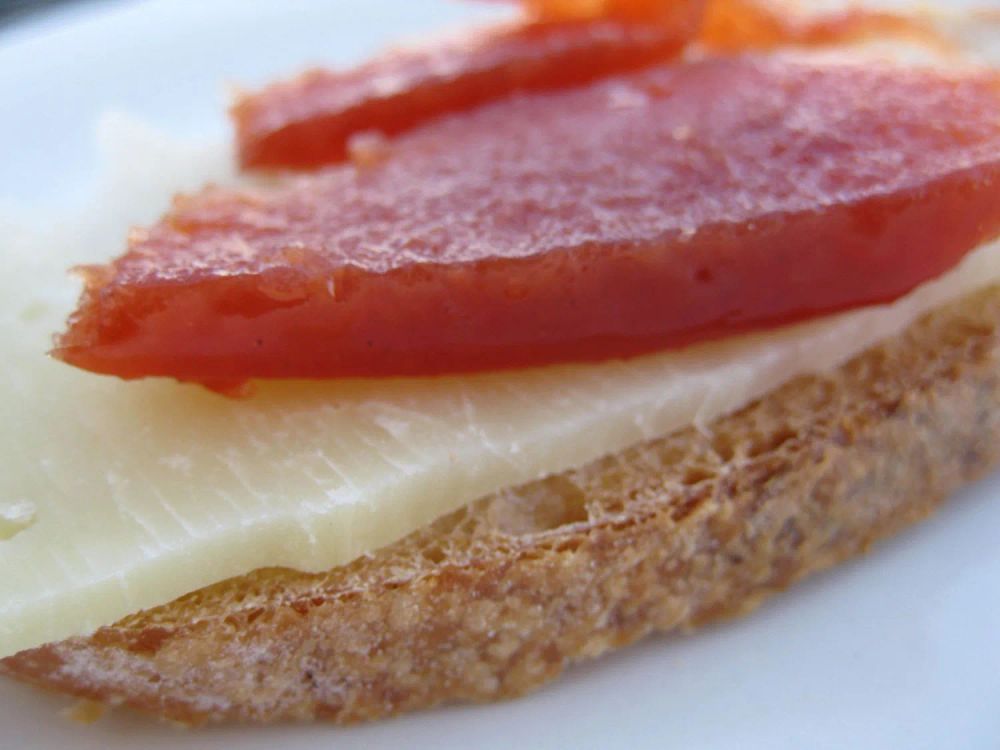
Ingredients
32 servings
- •4.5 pounds ripe quinces
- •5.5 cups white sugar
- •water to cover
Instructions
- Wash, peel, and core quinces, reserving cores and peels. Coarsely chop flesh and transfer fruit to a large pan. Wrap cores and peels in cheesecloth, tie the bag with kitchen string and add it to the pan. (The peels contain most of fruit's pectin, which contributes to the firmness of quince paste.)
- Pour in enough water to cover quinces and boil, with the pan partly covered, 30 to 40 minutes or until fruit is soft. Remove the bag of peels and pass quince flesh through a sieve or food mill. (For best results, don't use a food processor as it will result in too fine a texture.) You should have about 2 1/2 pounds of fruit pulp.
- Transfer quince pulp to a saucepan and add sugar. Ideally, you should add the same amount of sugar, by weight, as fruit pulp. Cook and stir over low heat until sugar is dissolved. Continue cooking for about 1 1/2 hours, frequently stirring with a wooden spoon, until paste becomes very thick and has a deep orange color. Draw the wooden spoon along the bottom of the saucepan: it should leave a trail, and quince mixture will stick to the spoon.
- Lightly grease a 9x13-inch baking dish or line it with greased parchment paper. Transfer quince paste to the baking dish, spreading it about 1 1/2 inches thick. Smooth the top and allow it to cool.
- Dry paste for about 1 1/2 hours on your lowest oven setting, no more than 125 degrees F (52 degrees C). Allow quince paste to cool completely before slicing. In Europe, the traditional method of drying quince paste is to leave it in a cupboard for about 7 days. The remaining juices will continue to evaporate and render a drier paste.
- Store quince paste in an airtight container in the refrigerator; the color will deepen with age.
Nutritional Facts
Per 32 servings
- Calories: 170
- Carbohydrate: 44g
- Fat: 0g
- Fiber: 1g
- Protein: 0g
- Sugar: 34g
